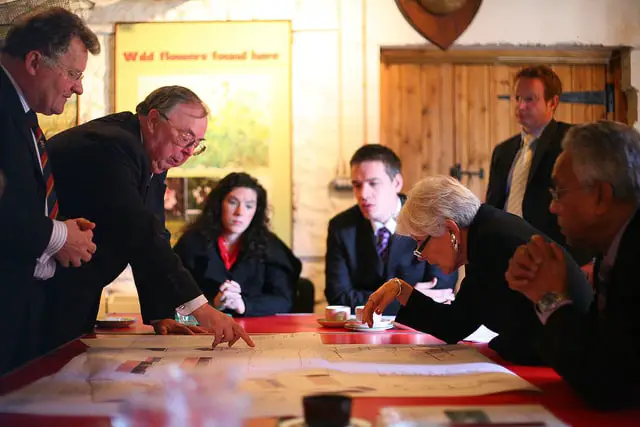Organizational Behavior And It’s Features
What is Organizational Behavior?
Organizational Behavior is an applied field of inquiry that encompasses the study of all aspects of behavior in and by formal organizations. It treats as units of analysis everything from individuals acting, feeling and thinking in an organization to groups, larger subunits such as departments or divisions, the organizations as a whole and even populations of organizations and their relationship to larger social structure such as state and society.
Organizational Behavior offers a crucial approach in the sense that rather than focusing on the functional or structural aspects of the organization or giving importance to the quantifiable elements. Organizational behavior focuses on the human processes within the organizations.
A strategic management approach to effectiveness provides guidelines about how an organization can achieve its important goals, and fit into the external environment well financial management and quantitative techniques such as statistical quality control, project management techniques and operation research help organization achieve high levels of efficiency in their performance. Contingency management focuses on a range of alternative styles, preference, and choice available to managers. The appropriateness of each one of them is determined on the basis of variables of the situation.
Features of Organizational Behavior
- A Field of Inquiry
A field open to an inquiry is open to anyone who wants to examine, explore and understand or even to evaluate and predict. That makes all of us Lay, scientists because all of us have our own theories that describe, explain and prescribe behavior and some of us want to test them, share them and improvise upon them. A scientific theory explains a phenomenon on the basis of a plausible general principle.
If we understand a theory as an explanation of reality, even when restricted to formal organizations, the organizational behavior faces the tough challenges of being systematic and free of biases, open-minded and enquiring, quantitative through measurements without losing sensitivity to the qualitative dimensions, tolerant to multiplicity of valid explanations and accepting of knowledge emerging from practice.
- Focus on Behavior Within the Organization
While behavioral sciences may focus on any behavior in general, including animal behavior organizational behavior is concerned with human behavior in work setting. Whenever is the type of an organization whenever work happens, the basic OB position is that all of such organization s represents a dynamic interrelation between individuals, groups and the largest elements of the organization?
This means that a valid understanding of OB requires not just an individual or group focus and inquiring as to how they behave at work but also the characteristics pattern of organizational actions over time, which reflects that organizational knowledge.
- Humanistic and Positive
The basic value in the study of OB is that an individual is an autonomous entity, with an innate potential to be creative & productive. In contrast to driving human performance, the emphasis is on creativity and the joy of freedom of choice. This difference arises because of the basic assumption that a person, who values autonomy and choice, would also be aware of the responsibility of making appropriate choices.
The view highlights the importance of the knowledge that supports the autonomy and choice as well as the continued development and growth of the individual. If everyone has such a potential for development, learning and choice then collective human efforts should be organized in a democratize manner and through goodwill and fairness, so as to nurture, support and facilitate the efforts to relies on the human potential.
- Importance of Groups
Organizational Behavior accepts groups as a powerful social phenomenon within the organization that strongly affects and gets affected by individuals and organization. In an organization, no individual works in isolation, just as one’s family constitutes one’s primary social system, the group with whom one works family is one’s secondary social system. A working group is generally understood as a collection of people who have individual as well as common work goals and who depend on each other for achieving those goals.
- Ongoing Process
Organizational effectiveness as an objective for OB implies a continuous effort to change develops in the context of a dynamic environment. Thus OB assigned special importance to planned change, individual as well as organizational learning and the creation of an organizational culture that supports these. This thrust for change and development has to be organization-wide not in small patches or parts of it. It also has to be comprehensive, that is addressing both the structural as well as process changes. It cannot be a sporadic effort but has to be maintained at a sustained level.
